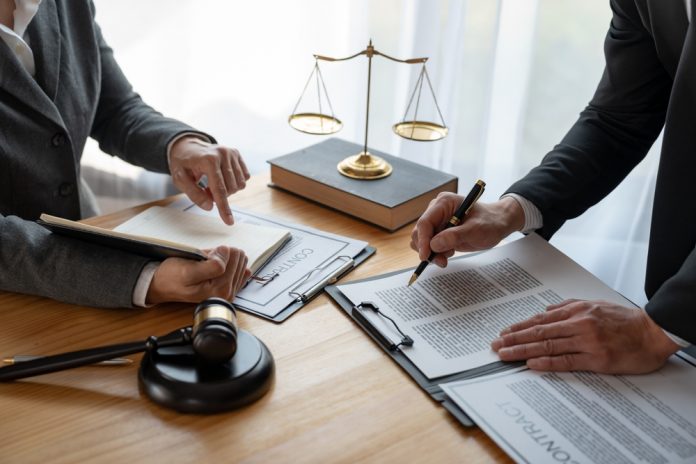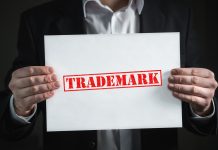This article has been written by Swayamprabha Sarangi pursuing a Paralegal Associate Diploma course from LawSikho.
This article has been edited and published by Shashwat Kaushik.
Table of Contents
Introduction
Software is a certain set of instructions that is executed in an expression. The TRIPS Agreement under Article 10 has recognised their computer software as intellectual property; thus, it is to be protected. Computer software is the result of human skills and talents, original and well thought out. The programme codes are the expression of the idea. Therefore, it qualifies as a copyrightable work.
With the growing industries where computer software plays a crucial role in knowledge and information and is a part of their product development, customer attraction, and customer retention, copyright protection would help all those owners against unauthorised and unlawful use of these uses, hampering their monopoly.
Copyright protection and software
Any intangible property arising out of human intellect is called intellectual property. To safeguard the owner’s right to exploit it and get benefit from it, it is protected under laws laid down under various IPR legislations. Copyright is one of the kinds of IPR. It is granted to the creators of the work. It is granted the moment it is created. The author is granted the economic or pecuniary right over it. Copyright registration is not mandatory; however, it is prima facie evidence.
In India, copyright is covered under the Copyright Act, 1957. It includes all forms of the original output of literary works, dramas, music, scripts, books, all forms of artistic works, etc.
Section 2(ffc) of the Copyright Act, 1957, provides for all forms of computer software programmes. All the codes and functions of the programmes that can be expressed and that expression can be collected as a fruitful output can be protected under copyright protection.
All forms of manuals, discs, tapes, etc. that can be used to understand the operations of computer programmes can be protected under that Act.
Anything to be qualified for protection under the copyright act needs to be original. So, the computer programme should include the skills and efforts of a human brain to make a new script altogether.
TRIPS Agreement and software
The Agreement on Trade-Related Aspects of Intellectual Property Rights was an international treaty conducted by the World Trade Organisation. It gave various guidelines to administer the various types of intellectual property, like patents, copyright, trademarks, trade secrets, designs, etc., for the members of the WTO to follow in the developed world under the new regime.
Article 10 of the TRIPS Agreement includes computer software. It allows all forms of software, inclusive of both source code and object code.
The increasing use of software in industrial work and a lack of statutory laws to protect the same have forced the recognition of software as intellectual property, as it is a product of human intellect. All the IT firms customise the programmes and software according to their needs. Therefore, there is a high chance of copying the style and codes. To cover all these bubbles in the system, software needed to be protected.
Infringement
If the software is copied head to toe in literal language, then that is prohibited by law. However, reverse engineering is allowed.
The problem arises when it comes to non-literal copying. Here, the alleged infringer does not copy the code but something of the code. To determine this, several tests have been developed by the US Court.
- In the “look and feel test,” if the look and feel of the programmes are the same, then it will be called infringement.
- The Welan test was developed in the case of Welan Associates v. Jaslow Dental. It discussed the “concept and feel” of the programme. You cannot rewrite a programme in a different language. It would still amount to infringement of copyright even if initially, the code was written in some other language. Therefore, it is required to protect computer programming beyond the literal codes, i.e., structure, sequence, and organisation. Otherwise, there is a high chance of multiple variations. However, with the essence of time, this test became outdated.
- The Abstraction Test, in which the court follows the theories of reverse engineering, would first separate the constituted parts of the alleged programme into ideas, expression and function, and then analyse and scrutinise every part.
- Then, following the process of filtration, the parts will be thoroughly examined to find out whether the incidents of the programmes are similar to those of the programmes taken from the public domain. The American Congress established the National Commission on the New Technological Uses of Copyrighted Works to recognise the applicability of the merger doctrine to computer programmes. Their report stated that even if a certain code is copyrighted but in need of certain results, if that protected code is the only medium to get there, then it will not amount to copyright infringement.
- If a certain programme is released in the public domain, then no author is allowed to exploit it. The court decided to filter out material programmes that are already in the public domain. This is called copyrightability of material in the public domain.
- After following the elimination process, the court was left with one small portion of the infringer’s programme, which, by following the process of comparison, will be compared with the prosecution’s contention. If it is found to be similar, then it would amount to copyright infringement.
- Last but not least, if the programmers are not given a fair policy to protect their programmes, then nobody will even try to make or be updated with these programmes and software, which will in turn hamper their profits. And also, it will be unfair on the part of the public who would be deprived of any such creativity
Software – patent or copyright
The ongoing tiff regarding software being patented or protected under copyright is humongous. Copyright is an expression of ideas, whereas a patent is an invention of an idea. But, concerning the software and digital functions, they are both original inventions of ideas and cannot be separated from each other. The expression, coding, and result all in their original forms deserve copyright protection. But the invention, mathematics, and algorithms cannot be patented.
Currently, for the legal protection of the software, the following approaches have been followed and arguments have been made by different people.
Status quo approach
There was always a doubt behind the non-literal elements of the software. Will they be protected? But Ginsberg has rightly solved this problem and has cleared that software can be protected starting from the structure, sequencing, and functioning of all the sets of programmes, i.e., from the source code to the object code. Copyright alone is enough for software protection. All that is needed is proper analysis, execution, and scrutinization.
Make is Fit approach
Copyright is given on the expression of the idea. Which is original and expressed. Patents are given for scientific and technological developments and inventions. So, the problem that arises for software is what is to be patented and what is copyrightable. This is solved by Karjala. He suggests that we have to separate the functional part from the non-functional part. All the functional parts, like literal codes, can be protected by copyright and sequences, and structures can be protected by patent.
Sui generis approach
Samuelson, argues that neither copyright protection nor patent protection alone can help. Because copyrights can protect only textual expressions, in patents, prior novelty cannot be made as it requires an invention in advance. Therefore, the application of both can disrupt both forms of protection.
Clean slate approach
Dreyfuss suggests that to fit the changing world and current trends and needs of society, we need a new regime altogether, as there will always be ambiguity. However, copyright registration is not mandatory, but it is prima facie proof. And the invention of technologies and methods would require patents and the coding would require copyright protection.
Conclusion
There is a little liberal approach in terms of the use of copyrighted work. With the changing times when the trend is shifting every year and new and updated programmes are being developed, it would be a little difficult to discard the last used code. The period of copyrighted work is up to 60 years, which would not be feasible with the changing trend. Also, such a restriction would amount to a harsh monopoly, which would not be better for the market. And the doctrine of merger will never be complied with.
When it comes to software being patented or protected under copyright, I conclude and very well agree with all the above philosophers and their study. Certain units are part and subject to certain inventions which include science, mathematics, algorithms, and technology which need to be patented. Having said that, the use of the human brain and ideas and talents to write those algorithms and scientific formulas to express the idea is itself copyrightable. All are required to have a harmonious construction of both the IPs so that the author gets maximum benefit.
References
- https://blog.ipleaders.in/all-you-need-to-know-about-the-trips-agreement/
- https://papers.ssrn.com/sol3/papers.cfm?abstract_id=2774051#:~:text=At%20the%20time%20the%20Convention,works%20under%20the%20Berne%20Convention.
- https://papers.ssrn.com/sol3/papers.cfm?abstract_id=995446
- https://www.mondaq.com/india/copyright/802408/software-protection-under-copyright-law#:~:text=TRIPS%20set%20forth%20three%20different,works%20under%20the%20Berne%20Convention.
- https://www.mondaq.com/india/copyright/949696/softwares-copyrightable-under-the-indian-copy-right-act
 Serato DJ Crack 2025Serato DJ PRO Crack
Serato DJ Crack 2025Serato DJ PRO Crack










 Allow notifications
Allow notifications



